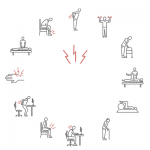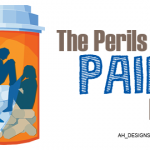(Reuters Health)—Prescriptions for nerve pain medicines like Neurontin and Lyrica have more than tripled in recent years, driven by increased use among chronically ill older adults and patients already taking opioids, a U.S. study suggests.
The proportion of U.S. adults prescribed Neurontin and other drugs in the same family of medicines climbed from 1.2% in 2002 to 3.9% by 2015, a period that also saw a surge in opioid overdoses and deaths. The drug class, known as gabapentinoids, includes gabapentin (Neurontin, Gralise, Horizant) and pregabalin.
“Nearly one in 25 adults takes a gabapentinoid during a year, which matters because we have little data to support much use of this drug class and minimal data to support the long-term safety of the medications,” said study author Dr. Michael Johansen of the Heritage College of Osteopathic Medicine at Ohio University in Athens.
“My suspicion is that much of the use is driven by attempting to treat chronic pain with a non-opioid medication,” Johansen said by email.
U.S. deaths from opioids including heroin and prescription drugs like oxycodone, hydrocodone and methadone have more than quadrupled since 1999, according to the Centers for Disease Control and Prevention in Atlanta. Today, more than six in 10 drug overdose deaths involve opioids.
Amid this worsening opioid epidemic, the CDC has urged physicians to prescribe other drugs for pain including acetaminophen and nonsteroidal anti-inflammatory drugs (NSAIDs) as well as gabapentinoids.
Gabapentin and pregabalin both have won U.S. Food and Drug Administration (FDA) approval for treating partial seizures and a type of nerve pain caused by shingles. A version of gabapentin has also been approved for restless leg syndrome, and pregabalin has additional approvals for fibromyalgia and nerve pain related to diabetes and spinal cord injuries.
While the FDA doesn’t allow drug companies to promote these medicines for other conditions, doctors are free to prescribe the drugs for off-label uses.
Off-label use of gabapentinoids has been controversial, however, because these drugs can be addictive, they haven’t been proven effective for many common unapproved uses and there’s limited long-term safety data, Johansen writes online January 2 in JAMA Internal Medicine.
For his study, Johansen reviewed survey data from a nationally representative sample of 346,177 adults, including details on any medical conditions and prescriptions.
Overall, more than four out of five of prescriptions for gabapentinoids were for gabapentin, the analysis found.
Prescription growth was concentrated among older adults, diabetics, people with multiple chronic health problems and patients already taking opioids or benzodiazepines like Valium and Xanax.
One limitation of the study is that it relied on participants to accurately report on any drug use, and it’s possible that some people did not disclose opioid use. The study didn’t include prescription records or information on drug costs.
“The use of gabapentinoids specifically seems to be outpacing any proven efficacy and the potential significant harms like addiction and overdose are only beginning to be investigated,” said Dr. Christopher Goodman, a researcher at the University of South Carolina School of Medicine in Columbia who wasn’t involved in the study.
While some patients may benefit from these drugs, they should consider other approaches to pain management like exercise, physical therapy and yoga that may be safer and still provide some relief, Goodman said by email.
Side effects of gabapentinoids include sedation, dizziness and trouble thinking, Dr. Chad Brummett, an opioid researcher at the University of Michigan in Ann Arbor who wasn’t involved in the study, said by email. The risks are worse at higher doses.
Mixing these drugs with opioids and benzodiazapines may make them even more dangerous, said Marissa Seamans, a researcher at the Johns Hopkins Bloomberg School of Public Health in Baltimore who wasn’t involved in the study.
“Gabapentinoids are increasingly prescribed to patients with opioids and benzodiazapines, which increases the risk of respiratory depression and death,” Seamans said by email. “Clinicians and patients need to carefully monitor the dosage of these medicines, their interactions, and potentially fatal side effects.”
Reference
- Johansen ME. Gabapentinoid Use in the United States 2002 Through 2015. JAMA Internal Medcine. 2018 Jan 2. [Epub ahead of print]



